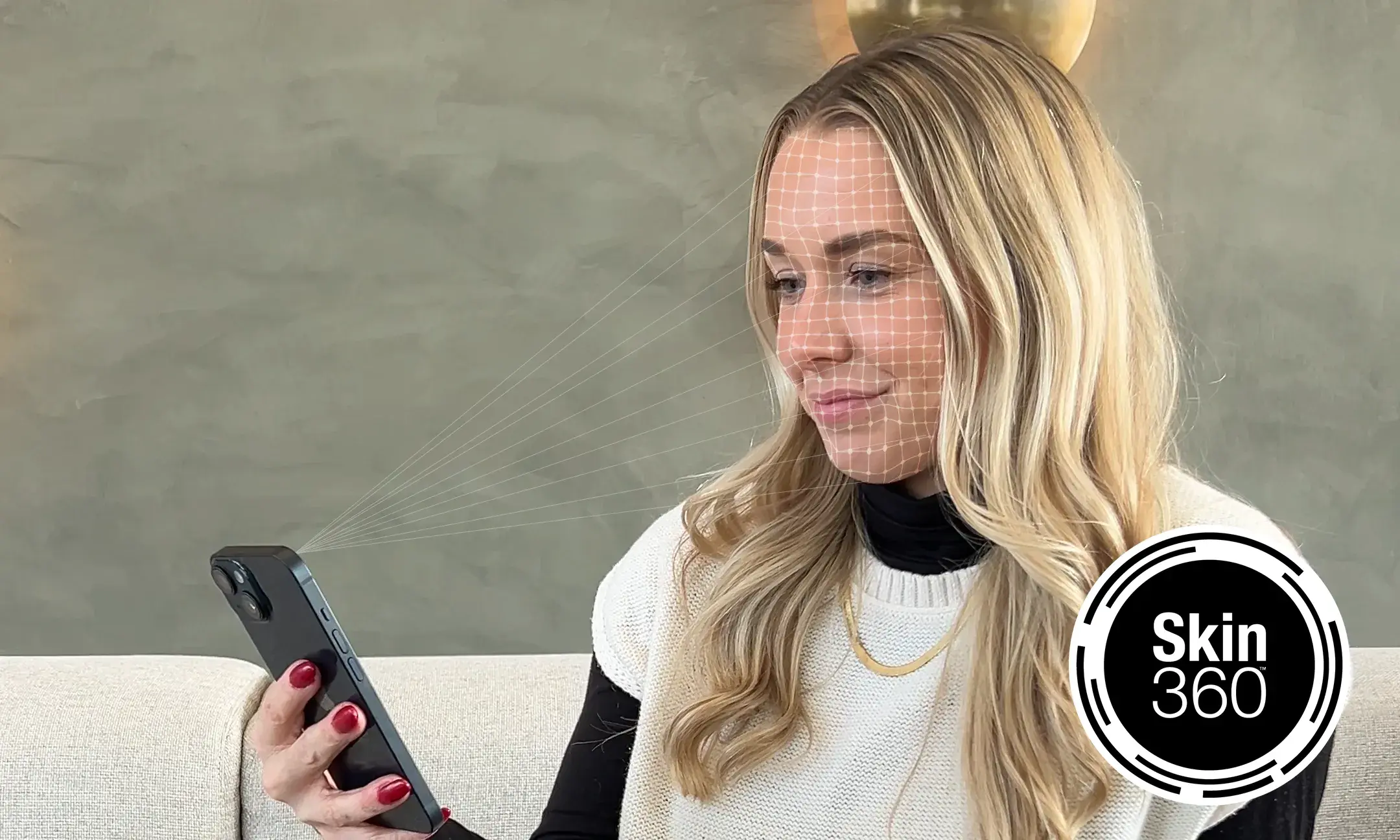What is SPF?
You've seen it on your sunscreen labels, but what does SPF stand for? SPF stands for "sun protection factor," which measures the level of protection a product provides against the sun's ultraviolet B (UVB) rays. These rays are responsible for sunburn and contribute to skin cancer.
Essentially, a product's SPF indicates how long it would take your skin to burn when used precisely as instructed compared to unprotected skin. In other words, the "factor" in SPF represents how much sun exposure your skin can handle when wearing that product without getting burned. However, SPF isn't directly related to the amount of time you spend in the sun. Other factors, like time of day, geographic location and weather, also affect sun exposure's intensity.
SPF numbers also indicate the rough percentage of UVB rays a product can filter out:
SPF 15: 93%
SPF 30: 97%
SPF 50: 98%
SPF 100: 99%
While these differences might seem minor, they can be significant over time. If you plan to be out and about in the sun, the Skin Cancer Foundation recommends a broad-spectrum, water-resistant sunscreen with SPF 30 or higher.
Broad-spectrum protection: UVB and UVA
While SPF measures how well a sunscreen protects against UVB rays, the sun also produces ultraviolet A (UVA) rays. These rays penetrate deeper into your skin, causing visible signs of premature aging and contributing to some skin cancers. Plus, they're around all year and can even get through clouds and glass!
Broad-spectrum sunscreens shield you from both UVB and UVA rays to help prevent sunburn, lower your risk of skin cancer and keep your skin healthy-looking when used as directed with other sun protection measures.
Common myths and misconceptions
A few misconceptions about SPF can lead to improper use and reduced effectiveness.
Higher SPF means better sun protection
The Skin Cancer Foundation explains that, under controlled conditions, a broad-spectrum sunscreen with a higher SPF offers better protection than one with a lower SPF. However, many factors play into sun protection — including application and reapplication — so you can't rely on SPF number alone.
SPF protects against UVA and UVB rays
SPF primarily measures protection against UVB rays, not UVA rays. To protect against both, you need a broad-spectrum sunscreen.
You only need SPF on sunny days
Up to 80% of UV rays can penetrate clouds and reach your skin, so sunscreen is necessary even on rainy and overcast days.
A base tan prevents sunburn
A tan offers minimal protection against sunburn (roughly equivalent to SPF 2 to 4) and doesn't prevent skin damage or reduce skin cancer risk.
What are the uses of SPF?
So, what is SPF used for? SPF is essential ingredient in your year-round sunscreen routine for the following reasons.
Helps prevent sunburn
Think of SPF as your skin's bodyguard against angry sunburns. In combination with other sun-safety measures, wearing SPF — especially broad-spectrum sunscreen — is like wearing an invisible sun shield!
Reduces skin cancer risk
Daily sunscreen use significantly reduces your skin cancer risk. Wearing broad-spectrum SPF 15 sunscreen as directed can lower your risk of developing squamous cell carcinoma by approximately 40% and melanoma risk by 50%.
Helps prevent premature skin aging
Want to keep wrinkles, fine lines and sunspots at bay? Broad spectrum SPF use in conjunction with other sun protection measures slow down the UV-induced skin aging process, keeping your skin looking fresh and radiant.
Supports even skin tone
Broad-spectrum SPF sunscreen helps prevent and improve pigmentary concerns like sun induced discoloration such as dark spots.
Protects compromised skin
If you have inflammatory or sensitive skin conditions like rosacea or eczema, products with SPF are essential to shield your skin from further irritation and damage.
Where does SPF come from?
Did you know that sun protection has ancient roots? Past civilizations used natural substances like olive oil and rice bran to shield their skin from the sun. Fast forward to 1946 when Swiss chemist Franz Greiter created the first modern sunscreen after suffering a nasty sunburn a decade earlier. But there was still no way to measure how well it worked.
In 1962, Greiter was credited with introducing the SPF rating system, allowing consumers to make smarter sun protection choices. Fun fact: Greiter's initial product, Gletscher Crème, had an SPF of just 2!
By the late 1970s, the U.S. Food and Drug Administration stepped in to regulate the growing sunscreen market, enforcing strict SPF testing and labeling requirements. Across the pond, the European Commission began regulating sunscreens in 2006, ensuring standardized efficacy and product labeling.
The sunscreen industry has come a long way since then. Dermatological innovations have made sunscreens more effective, easier to apply and more pleasant to use. Modern sunscreens are lightweight, non-greasy and fast absorbing, available in lotions, gels, sprays and sticks. Plus, SPF is now integrated into cosmetic products like foundations and BB creams, making daily sun protection a breeze.
Looking ahead, the future of sunscreen is bright. With ongoing research and development, more sunscreens may include antioxidants. Some sunscreens may even let you know when to reapply. So, stay tuned and keep protecting your skin in the meantime!
How to incorporate SPF into your skincare routine
Here's how to boost your sun protection.
Try a skincare or cosmetic product with SPF
While broad-spectrum sunscreen is the gold standard of topical sun protection, SPF isn't limited to sunscreen. Many skincare and cosmetic products now include sunscreen, making it easier to maximize sun protection.
Moisturizer
Facial moisturizers with SPF hydrate your skin while protecting it from UV damage. One to try? Neutrogena® Hydro Boost Hyaluronic Acid Moisturizer SPF 50. This non-greasy gel is formulated with hydrating hyaluronic acid and broad-spectrum SPF protection to quench and shield your skin in one simple step.
Lip Balm
Lip skin is vulnerable to sun damage and sunburn, too. Lip balms with SPF protect this delicate area from the sun's rays. Apply Neutrogena® Revitalizing Lip Balm SPF 20 for a beautiful sheer tint that instantly moisturizes and shields your lips from UV rays.
Makeup
From foundations to powders, try makeup with SPF like Neutrogena Healthy Skin® Liquid Makeup Broad Spectrum SPF 20 for added protection throughout the day.
Use enough sunscreen
Use a nickel-sized dollop (about a teaspoon) for your face, head and neck and a shot-glass full (1 ounce) for your body.
Apply thoroughly
Cover every inch of exposed skin, including easy-to-miss spots like your ears, the back of your neck, the tops of your feet and the backs of your hands.
Reapply regularly
Reapply sunscreen at least every two hours or more often if you're swimming or sweating. And remember, water-resistant doesn't mean waterproof! To make reapplication easy and mess-free, opt for a quick-drying spray sunscreen like Neutrogena® Invisible Daily™ Defense Body Spray Sunscreen Broad Spectrum SPF 60+.
Combine SPF with other protective measures
Choose clothing with sun protection and opt for long sleeves, wide-brimmed hats and sunglasses. Seek shade during peak sun hours from 10 a.m. to 4 p.m. Umbrellas and sun-protective scarves can give you an extra layer of defense.
Choose SPF products for your needs
Sensitive skin
Opt for physical sunscreens with zinc oxide or titanium dioxide, and avoid fragrance. Neutrogena® Purescreen+® Invisible Daily Defense Mineral Face Liquid with SPF 30 and Neutrogena® Mineral Ultra Sheer® Dry-Touch SPF 30 Sunscreen Lotion are both great choices.
Oily and acne-prone skin
Look for lightweight, non-comedogenic, oil-free sunscreens like Neutrogena® Clear Face Break-Out Free Liquid Lotion Sunscreen Broad Spectrum SPF 50 to avoid clogging pores.
Active lifestyles
Pick 40 or 80 minute water-resistant, sport-specific sunscreens to ensure long-lasting protection during vigorous activities.





